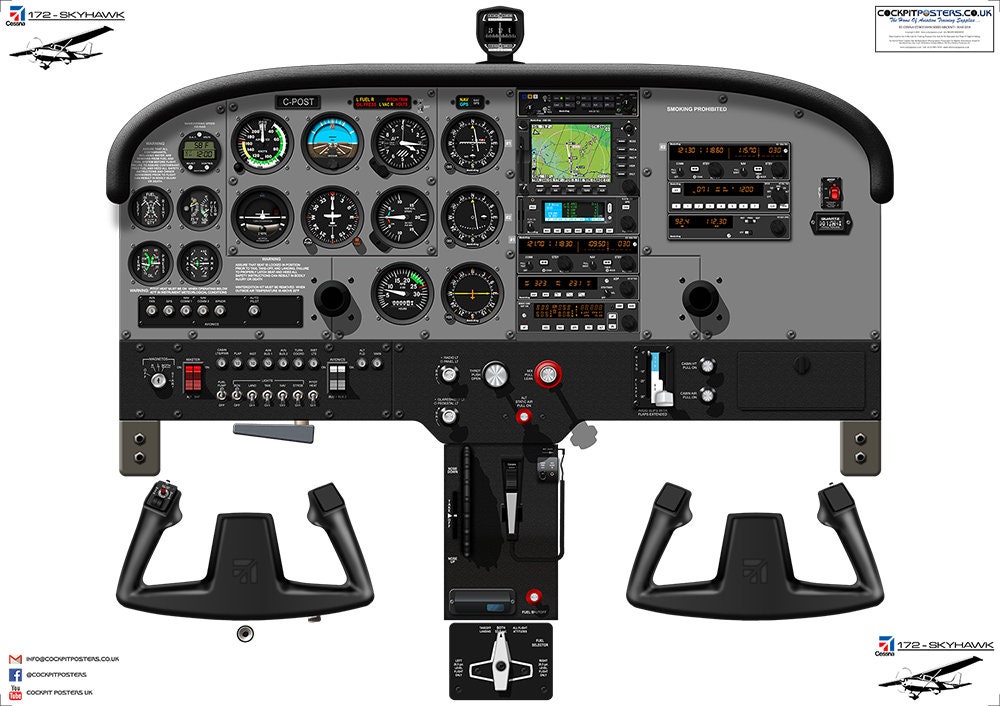
Pressing the lower part of the pedals allows steering while on the runway. Press the top edge of the pedals and the brakes are applied.

Only pull the red knob fully out when you are on the ground and ready to shut down the engine.
#Cessna 172 cockpit picture full#

Throttle – a black knob – When pushed forward, the engine speed increases and when pulled back, the engine speed decreases.government agency responsible for monitoring and setting guidelines for civilian aviation Go to source The necessary controls for flying this plane are: X Trustworthy Source Federal Aviation Administration U.S. Note: The two round instruments directly to the right of the six pack are dual VOR (VHF Omni-directional Range) instruments, and to the right of them are two identical VOR radios, used for communications and VOR navigation.Lower right - The Vertical Speed Indicator tells how fast the aircraft is climbing or descending.This instrument needs to be calibrated on a regular schedule. Lower center - The Heading Indicator shows the aircraft's current compass heading.This is also called the "Turn and Slip Indicator" or "Needle Ball." Lower left - The Turn and Bank Indicator is a dual instrument which tells what angle of bank you are in during a turn (rate of turn) and also whether you are in co-ordinated flight and feeling the proper, down-in-the-seat G-force from the turn.Top right - The Altimeter shows the height (altitude) of the aircraft in feet MSL-feet above mean, or average, sea level.Top center - The Artificial Horizon shows the aircraft attitude and whether the plane is climbing or descending as well as whether it is in a bank to the left or to the right.(A knot is one nautical mile per hour-about 1.15 MPH or 1.85km/hr).

Top left - The Airspeed Indicator shows aircraft airspeed, usually in knots.The six instruments are located on the instrument panel in the following order: X Research source With Piper and Beechcraft both introducing new entry-level lines in the early 60s, Cessna invested heavily in 172 development, adding new features and options on a yearly basis in order to maintain its market edge, a strategy that worked.Familiarize yourself with the six pack. Importantly, it also kept Cessna at the forefront of innovation in the segment. The new window configuration added a significant amount of light to the rear cabin. While Cessna never added a rear view mirror to the cockpit, the fuselage was modified to insert a rear window, which the marketing department named “Omni-Vision,” in 1963.
#Cessna 172 cockpit picture manual#
Early models had manual flaps, actuated by a big Johnson bar located between the seats. Even so, this 1969 IFR panel is remarkably capable, with ILS, ADF, and an autopilot, the roll-only Cessna brand Navomatic 300. It was later moved down for better ergonomics and instrument visibility, with the six-pack instruments centered above the yoke tube. By the late 1960s, the basic panel design had morphed to what we’re used to seeing today, but the yoke position remained near the center of the panel. The Skyhawk panel started out looking much like the Cessna 170’s.


 0 kommentar(er)
0 kommentar(er)
